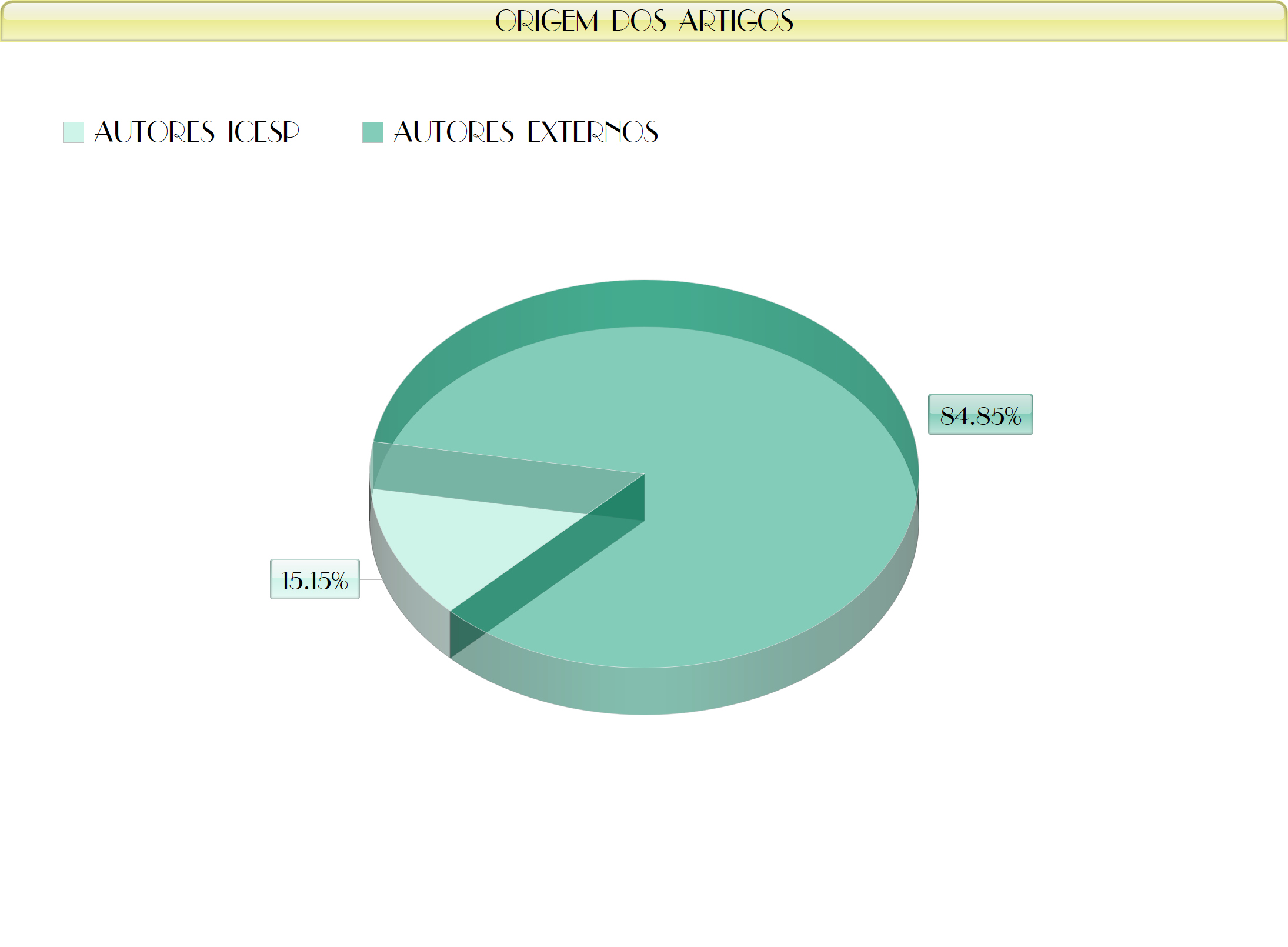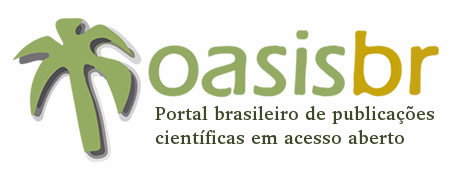Características associadas à utilização do narguilé em adultos jovens em uma universidade do sul do Brasil
Resumo
Introdução: As formas alternativas de tabaco ganharam popularidade no mundo. O narguilé refere-se a um instrumento que contem água na sua base, por onde passa a fumaça do tabaco antes da inalação, sendo tão prejudicial quanto o cigarro convencional. O uso de narguilé expõe os fumantes à nicotina e aos produtos de combustão, assim como, concentrações relevantes de outros compostos tóxicos. Objetivo: Caracterizar os padrões de consumo e exposição ao narguilé em adultos jovens em uma Universidade do Sul do Brasil. Métodos: Estudo analítico observacional, de caráter transversal, composto por estudantes universitários usuários de narguilé. Foi aplicado um questionário e realizou-se análise das características da amostra e das variáveis estudadas, apresentando as frequências absoluta e relativa, bem como medidas de tendência central e dispersão. Resultados: Foram incluídos 117 usuários que possuíam, em média, 20,6 ± 2,96 anos, sendo a maioria mulheres e estudantes de áreas da saúde. A média de idade da primeira experimentação foi de 16,5 ± 3,03 anos. A frequência de consumo foi, em média, duas vezes ao mês e o tempo por sessão foi superior a 30 minutos em 62% dos casos. Quase a totalidade da amostra não se considerava viciada e 53% acreditavam que o narguilé é menos viciante e que seu uso seja menos ou igualmente prejudicial ao cigarro. Conclusão: A maioria dos usuários teve o primeiro contato com o tabaco através do narguilé ainda na adolescência. O ato de fumar narguilé parece associado a uma percepção equivocada sobre os efeitos reais do narguilé sobre a saúde.
PALAVRAS-CHAVE: Cachimbos de água; Adulto jovem; Tabagismo
-----------------------------------------------------------------------------------------
Introduction: Alternative forms of tobacco have gained popularity around the world. The waterpipe refers to an instrument that contains water at its base, where tobacco smoke passes before inhalation, being as harmful as conventional cigarettes. The use of waterpipe exposes smokers to nicotine and combustion products, as well, as relevant concentrations of other toxic compounds. Objective: To characterize the patterns of consumption and exposure to waterpipe in young adults at a University in Southern Brazil. Methods: Analytical observational study, cross-sectional, that included university students using waterpipe. A questionnaire was applied and the characteristics of the sample and the variables studied were analyzed, showing the absolute and relative frequencies, as well as measures of central tendency and dispersion. Results: 117 users were included with 20.6 ± 2.96 years old, the majority were women and students from health sciences areas. The average age of the first experiment was 16.5 ± 3.03 years old. The frequency of consumption is twice a month and the time per session was over 30 minutes in 62% of cases. Almost of student not is considered addicted and 53% believe that the waterpipe is less addictive and that its use is less or equally harmful to cigarettes. Conclusion: Most users had their first contact with tobacco through the waterpipe during their teens. The use of waterpipe smoking perhaps to be associated with a misperception about the real effects of the use of waterpipe on health.KEYWORDS: Waterpipe; Young adult; Smoking
Palavras-chave
Referências
MAZIAK W. The global epidemic of waterpipe smoking. Addict Beha. v.36, 2011
WARREN, C W; et al. Global youth tobacco surveillance, 2000–2007. MMWR Surveill Summ. v,57, n.1, p. 1–21, 2008
AKL EA, et al. The effects of waterpipe tobacco smoking on health outcomes: a systematic review. Int J Epidemiol. v.39, n.3, p.834–857, 2010
WAZIRY R, et al. The effects of waterpipe tobacco smoking on health outcomes: an updated systematic review and meta-analysis. Int J Epidemiol. v.46, n.1, p. 32– 43, 2017
MARTINS, S.E, et al. Experimentação de e conhecimento sobre narguilé entre estudantes de medicina de uma importante universidade do Brasil. J. bras. pneumol., v.40, n.2, p.102-110, 2014
World Health Organization (WHO). WHO Study Group on Tobacco Product Regulation. Advisory Note: Waterpipe Tobacco Smoking: Health Effects, Research Needs and Recommended Actions by Regulators. 2ed. World Health Organization; 2015
KATES, FR; et al. Geographic proximity of waterpipe smoking establishments to colleges in the US. Am J Prev Med. v.50, n.1, p. 9-14, 2016
HAIDER, MR; et al. Factors associated with smoking frequency among current waterpipe smokers in the United States: ndings from the National College Health Assessment II. Drug Alcohol Depend. v.153, p. 359–363, 2015
ARNETT, JJ. Emerging adulthood: a theory of development from the late teens through the twenties. Am Psychol. v.55, n.5, p. 469-480, 2000
MAZIAK, W; et al. The global epidemiology of waterpipe smoking. Tob Control. v.24, p.1-10, 2015
REZK, H; BENOWITZ, N.Cardiovascular Effects of Hookah Smoking: Potential Implications for Cardiovascular Risk. Nicotine Tob Res. V.21, n.9, p.1151-1161, 2019
KIM, Ki-Hyun; KABIR, Ehsanul, JAHAN, Shamin Ara. Waterpipe tobacco smoking and its human health impacts. Journal of Hazardous Materials. V.317, n.5, p. 229-236, 2016
PRIMACK, BA; et al. Systematic Review and Meta-Analysis of Inhaled Toxicants from Waterpipe and Cigarette Smoking. Public Health Rep. v,131, n.1, p. 76–85, 2016
EISSENBERG, E; SHIHADEH, U. Waterpipe tobacco and cigarette smoking: direct comparison of toxicant exposure. Am J Prev Med. v.37, n.6, p.518-523, 2009
MAZIAK, 2004
BECKERT, MC, et al. Características do uso de produtos derivados do tabaco entre universitários do curso de Odontologia em uma Universidade de Curitiba. Rev Odontol UNESP. v,45, n.1, p.7-14, 2016
KOWITT, Sarah; et al. Adolescents’ first tobacco products: Associations with current multiple tobacco product use. Plos One. v.14, n.5, 2019
ARAUJO, Roseliane de Souza et al. Fatores relacionados ao consumo do narguilé entre estudantes de medicina. J. bras. pneumol., São Paulo , v. 45, n. 5, 2019
MAZIAK W, et al. Consensus statement on assessment of waterpipe smoking in epidemiological studies. Tob Control. v.26, n.3, p.338-343, 2017
Instituto Nacional de Câncer. Nota técnica: uso de narguilé: efeitos sobre a saúde, necessidades de pesquisa e ações recomendadas para legisladores. 2ed. Rio de Janeiro: INCA; 2017
HUANG LL, BAKER HM, MEERNIK C, et al. Impact of non-menthol flavours in tobacco products on perceptions and use among youth, young adults and adults: A systematic review. Tob Control. v. 26, p.709-719, 2017
MANSKE SR, et al. Flavoured tobacco use among Canadian youth: evidence from Canada’s 2012/2013 youth smoking survey. Waterloo: Propel Centre for Population Health Impact, 2014.
PATEL, Mit P. et al. A Review of the Pulmonary and Health Impact of Hookah Use. Annals of the American Thoracic Society. v 16, n. 10, 2019
LAKERAM, S. Hooked on hookah. Queens Scene. Disponível em: . Acesso em: 05 de junho de 2020.
HADDAD, L; et al. Waterpipe smoking and regulation in the United States: a compre- hensive review of the literature. Int J Environ Res Public Health. v.12, n.6, p. 6115-6135, 2015
HAIR, Elizabeth; et al. Trajectories of Hookah Use: Harm Perceptions from Youth to Young Adulthood. Am J Health Behav. v.41, n.3, p. 240-247, 2017
HAMMAL F, et al. A pleasure among friends: how narghile (waterpipe) smoking differs from cigarette smoking in Syria. Tob Control. v.17, n.2, 2008
GENTZKE AS, et al. Vital Signs: Tobacco Product Use Among Middle and High School Students — United States, 2011–2018. MMWR Morb Mortal Wkly Rep. p.158–164, 2019
Apontamentos
- Não há apontamentos.
Revista Brasileira de Pesquisa em Ciências da Saúde - RBPeCS - ISSN: 2446-5577
Indexadores:













